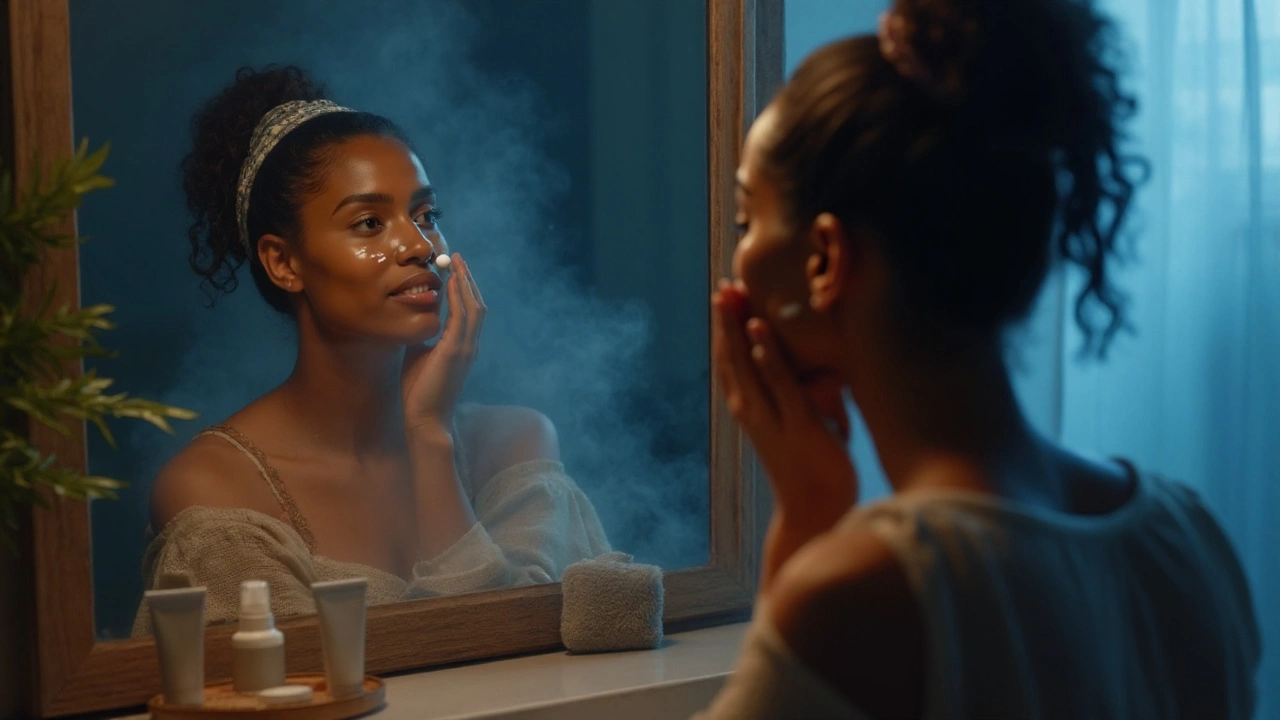Skin Lightening Risks – What You Should Watch Out For
If you’ve ever thought about brightening your skin tone, you probably’ve seen ads promising instant results. Those promises sound tempting, but the reality can be far riskier than a few extra minutes in front of the mirror.
Skin‑lightening products work by interrupting melanin production, the pigment that gives skin its color. While the visual change may be quick, the chemicals behind the glow often damage the skin’s natural defenses.
Common Side Effects You Might Not Expect
Most over‑the‑counter creams contain hydroquinone, mercury, or corticosteroids. These ingredients can cause redness, itching, and a burning sensation that feels like a mild sunburn. In some cases, users report persistent swelling or blisters that don’t heal easily.
Beyond the surface, long‑term use can thin the skin, making it more prone to injuries and infections. Thin skin also ages faster, showing wrinkles and sagging well before you’d expect.
Serious Health Risks That Can Develop Over Time
Mercury, a banned substance in many countries, can accumulate in the kidneys and brain. Symptoms include tremors, memory problems, and even kidney failure. If a product lists “unknown” or “proprietary blend,” it’s a red flag.
Corticosteroid‑laden creams suppress the immune response locally. This suppression can trigger fungal or bacterial infections that spread beyond the treated area. Some users develop a condition called ochronosis, where the skin turns a bluish‑gray hue that’s hard to reverse.
Even hydroquinone, once considered safe under prescription, carries a risk of ochronosis and may cause allergic reactions that turn the skin darker instead of lighter.
Another hidden danger is uneven skin tone. When only certain patches lighten, you end up with a mottled look that’s difficult to even out with makeup.
If you notice any of these signs—persistent irritation, discoloration, or unusual sensitivity—stop using the product immediately and see a dermatologist.
One practical way to reduce risk is to check the ingredient list carefully. Look for products that are FDA‑approved or have a reputable clinical trial backing them. If a brand can’t provide clear safety data, it’s best to skip it.
Consider safer alternatives like natural exfoliation with mild acids (glycolic or lactic) or vitamin C serums that brighten the skin without harsh chemicals. These options improve skin radiance gradually and carry far fewer health concerns.
Remember, changing your skin tone isn’t just a cosmetic choice—it can affect your overall health. Knowing the risks helps you make an informed decision and protect your skin for the long run.
Stay alert, read labels, and always prioritize safety over quick results. Your skin will thank you for it.
- September 15 2025
- 5 Comments
- Daryl Gardner
Hydroquinone + Mometasone + Tretinoin in Beauty: Evidence, Safety, and 2025 Rules
What the hydroquinone + mometasone + tretinoin combo really does, how beauty brands use it, 2025 regulations, safety risks, and smarter ways to treat dark spots.
- Health & Medicine (110)
- Health & Nutrition (8)
- Caregiving & Dementia (2)
- Health & Wellness (2)
- Environment & Climate (1)
Categories
- January 2026 (4)
- December 2025 (27)
- November 2025 (22)
- October 2025 (27)
- September 2025 (38)
- August 2025 (5)
- July 2025 (4)
Archives
- side effects
- generic drugs
- medication side effects
- dosage
- online pharmacy
- gut health
- medication safety
- generic substitution
- safety and side effects
- natural antioxidant
- coping strategies
- hypertension
- immunosuppressants
- mental health
- medication adherence
- drug safety
- NTI drugs
- narrow therapeutic index
- poison control
- combination therapy
